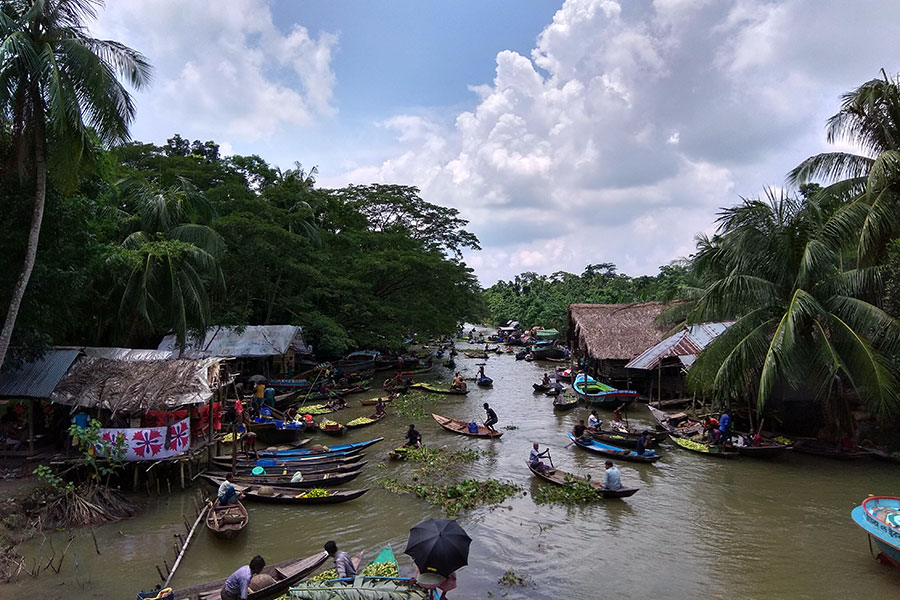Week 1 | Week 2 | Week 3 | Week 4 | Week 5
3.6

Bhimruli Floating Guava Market, Jhalokathi, Bangladesh. Lonely Explorer CC BY-SA 4.0.
Key debate: climate change and migration
In this first key debate you’ll reflect on and discuss how climate change will affect migration and how we relate to those changes. We’ll start with an image exercise.
1. Image exercise
- Grab a pen and paper or something you can write fast on. Nobody but you will read what you’ve written unless you want to.
- Go to Google Images, search for the words ‘climate and migration’ and pick one image.
- Write down as fast as you can all the thoughts, feelings, associations that come to mind for about 1-2 minutes.
- Breathe, and share any of your writings or reflections, ideas, thoughts that came out of this exercise in at the Studium page, Twitter or Facebook.
2. Migration as crisis and/or solution?
In The Next Great Migration (2020), investigative journalist Sonia Shaw writes that:
If we were to accept migration as integral to life on a dynamic planet with shifting and unevenly distributed resources, there are any number of ways we could proceed… We can turn migration from a crisis into its opposite: the solution. [1]
You can listen to an interview with Shaw about this book here.
Do you agree or disagree with Shaw? And how does your image exercise reflections influence your thoughts on migration and climate change?
3. The place where you live
Think about place where you live:
- What migration routes exist through or near where you live? What borders do they cross? How easy is it to move in and out of the region?
- Refer back to the sea level rise map and climate inspector – how will people move in your area if there is 2 degrees warming?
- How does your government talk about migration? How is it represented in the media you encounter?
See also
UNHCR. (n.d). Figures at a glance. 108.4 million people worldwide were forcibly displaced [2022].
© CEMUS and Uppsala University
